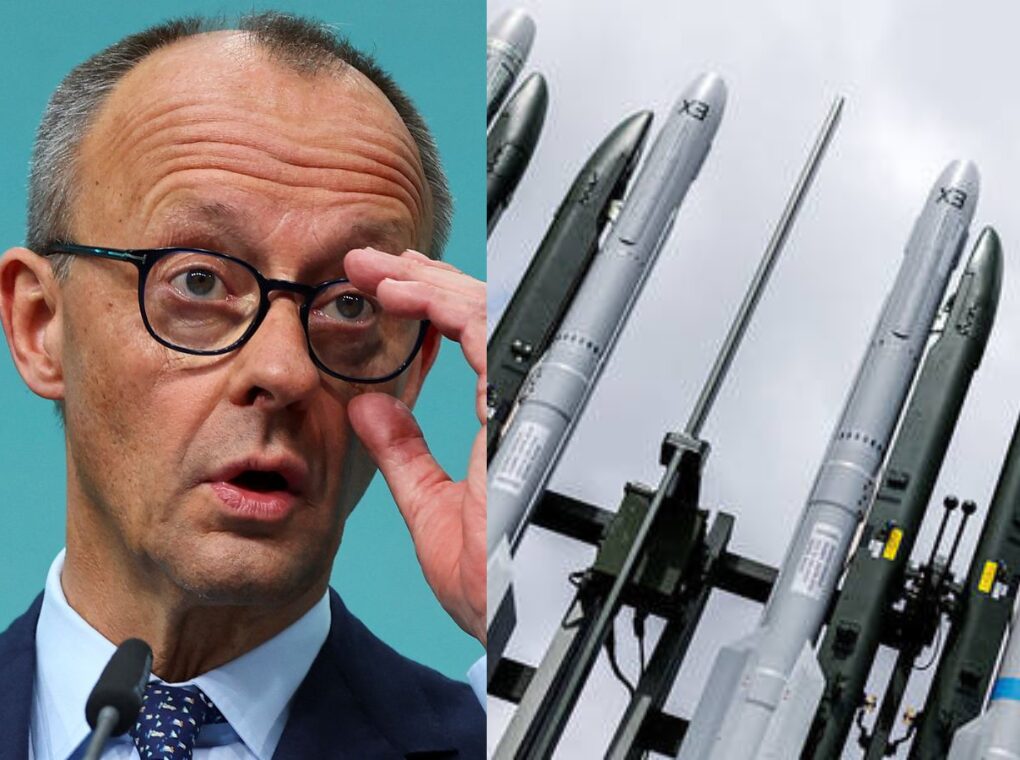Berlin is making a historic pivot. Nearly eight decades after World War II, Germany is preparing to shed its postwar military restraint and take center stage in Europe’s defense architecture. The newly revealed €377 billion Bundeswehr procurement blueprint — a classified document seen by POLITICO — signals not just a modernization drive, but a full-spectrum military renaissance aimed at making Germany “the strongest conventional army in Europe.”
A Strategic Reset: From Pacifism to Power Projection
When Chancellor Friedrich Merz declared in May that Germany would rebuild its armed forces into the continent’s most formidable conventional force, it sounded aspirational. But the new 39-page procurement document shows the financial muscle behind that rhetoric.
Across land, air, sea, space, and cyber, Berlin’s defense planners have outlined roughly 320 new weapons and equipment projects, forming the core of the Bundeswehr’s 2026 budget cycle and beyond.
This represents a fundamental redefinition of German strategic posture — from a defensive deterrent under NATO’s umbrella to a regional power capable of autonomous military action.
Breaking the Fiscal Chains: A New Funding Model
Historically constrained by the constitutional debt brake (Schuldenbremse), Germany’s defense spending was long limited by fiscal conservatism. That has now changed.
The Merz government has exempted defense from the debt brake, enabling long-term, multiyear investments beyond the €100 billion special fund set up by former Chancellor Olaf Scholz in 2022 after Russia’s invasion of Ukraine.
In essence, Berlin has institutionalized defense as a permanent pillar of national investment — not a temporary response to crisis.
Industrial Rearmament: Keeping the Cash at Home
Nearly half of the planned €377 billion will flow to German defense industries, ensuring that the modernization drive becomes an industrial revival.
Leading the charge is Rheinmetall, Germany’s defense behemoth, which appears across 53 separate procurement lines totaling over €88 billion. This includes both direct contracts (about €32 billion) and joint ventures worth another €56 billion, such as the Puma and Boxer armored vehicle programs developed with KNDS.
The Bundeswehr plans to procure 687 Pumas, including 662 combat variants and 25 training vehicles, to be delivered by 2035 — a massive expansion of mechanized ground capability.
Another major beneficiary is Diehl Defence, the Bavarian missile manufacturer that anchors Germany’s air-defense ambitions. With €17.3 billion in potential contracts, Diehl’s IRIS-T family is set to become the backbone of German and European air defense, with 14 IRIS-T SLM systems, 396 missiles, and 300 short-range LFK variants slated for acquisition.
Building the Shield: Air and Space Dominance
Germany’s modernization plan reflects a recognition that future warfare is not just terrestrial — it’s aerial, orbital, and digital.
On the air defense front, Berlin plans to acquire 561 Skyranger 30 short-range turret systems from Rheinmetall for drone and missile defense — a direct response to lessons from Ukraine.
In space, the Bundeswehr intends to spend over €14 billion on new geostationary satellites, upgraded control stations, and a low-Earth orbit constellation worth €9.5 billion to ensure jam-resistant, high-speed communications across all theaters.
This aligns with Defense Minister Boris Pistorius’ €35 billion “space security” initiative, designed to secure Europe’s military communications from cyber and kinetic threats.
Eyes in the Sky: The Drone and Naval Push
Unmanned systems also feature prominently. The Bundeswehr aims to expand its Heron TP fleet — operated with Israel’s IAI — with new munitions worth €100 million, and add 12 LUNA NG tactical drones for €1.6 billion.
For maritime operations, the Navy plans to acquire four uMAWS maritime drones valued at €675 million, providing surveillance, training, and maintenance packages to enhance Germany’s naval reach.
America’s Shadow: Dependence Amid Expansion
Despite the focus on domestic reindustrialization, Berlin’s most sensitive capabilities remain tied to U.S. systems — a paradox that underscores Europe’s enduring strategic dependency on Washington.
The Bundeswehr plans to:
Buy 15 additional F-35 fighter jets from Lockheed Martin worth €2.5 billion, ensuring Germany’s continued participation in NATO’s nuclear-sharing framework.
Procure 400 Tomahawk Block Vb cruise missiles and three Typhon launchers, giving Germany a 2,000 km deep-strike capability for the first time.
Expand maritime surveillance through four Boeing P-8A Poseidon aircraft, costing €1.8 billion.
In total, around €14 billion — less than 5% of total planned spending — will go toward foreign-linked projects, yet these represent nearly all of Germany’s nuclear and long-range strike capabilities.
Strategic Autonomy vs. Transatlantic Reality
Germany’s new defense roadmap exposes a delicate balance: rebuilding European autonomy while relying on U.S. platforms for deterrence credibility.
As Franco-German cooperation on the Future Combat Air System (FCAS) remains mired in disputes, Berlin’s preference for proven American systems such as the F-35 and Tomahawk could further strain intra-European defense cohesion.
Still, the scale of domestic spending — over €180 billion reserved for German contractors — ensures that Berlin’s rearmament is also an economic stimulus, securing jobs and industrial expertise while reinforcing Germany’s status as Europe’s defense anchor.
A Continental Game-Changer
If executed as planned, Germany’s €377 billion blueprint would transform the Bundeswehr from a hollowed-out force into a highly networked, multi-domain army capable of autonomous European operations — from Arctic patrols to cyber warfare.
It also repositions Germany as a central power in NATO’s European theater — not merely as a logistics hub or financial backer, but as a military heavyweight shaping deterrence strategy and industrial supply chains.
The Return of the German Arsenal
Germany’s rearmament is no longer hypothetical. It is budgeted, industrialized, and politically sanctioned.
By 2035, Berlin aims to field one of the world’s most technologically advanced armed forces — equipped with modern tanks, satellite-linked command systems, and long-range precision weapons.
For Europe, this represents both reassurance and unease: reassurance that the continent’s largest economy is finally stepping up to its defense responsibilities — and unease that, once again, Germany’s power is on the rise.
